US Economy I: On the Road Again. Taylor Swift’s “The Eras Tour” was her sixth tour. It started on March 17, 2023, in Glendale, Arizona and concluded on December 8, 202,4 in Vancouver, British Columbia. My “Roaring 2020s Tour” started in California at the end of January 2024. My latest stops were in Georgia and Tennessee last week. Next week, I’ll be in Las Vegas and Houston.
My tour has been well received, though not as well as Taylor’s. My main Roaring 2020s themes are the following:
(1) Resilient economy. We should be impressed by how well the US economy has grown over the past three years despite the significant tightening of monetary policy. The most widely anticipated recession of all time has been a no-show, attesting to the resilience of the economy. That increases the chances that the current economic expansion, which began in Q3-2020, will continue for longer than it has lasted so far; maybe there will be no recession through the end of the decade. Perhaps the Roaring 2020s will even be followed by the Roaring 2030s.
Real GDP has increased 23.5% since Q2-2020 (the bottom of the two-quarter recession) through Q4-2024.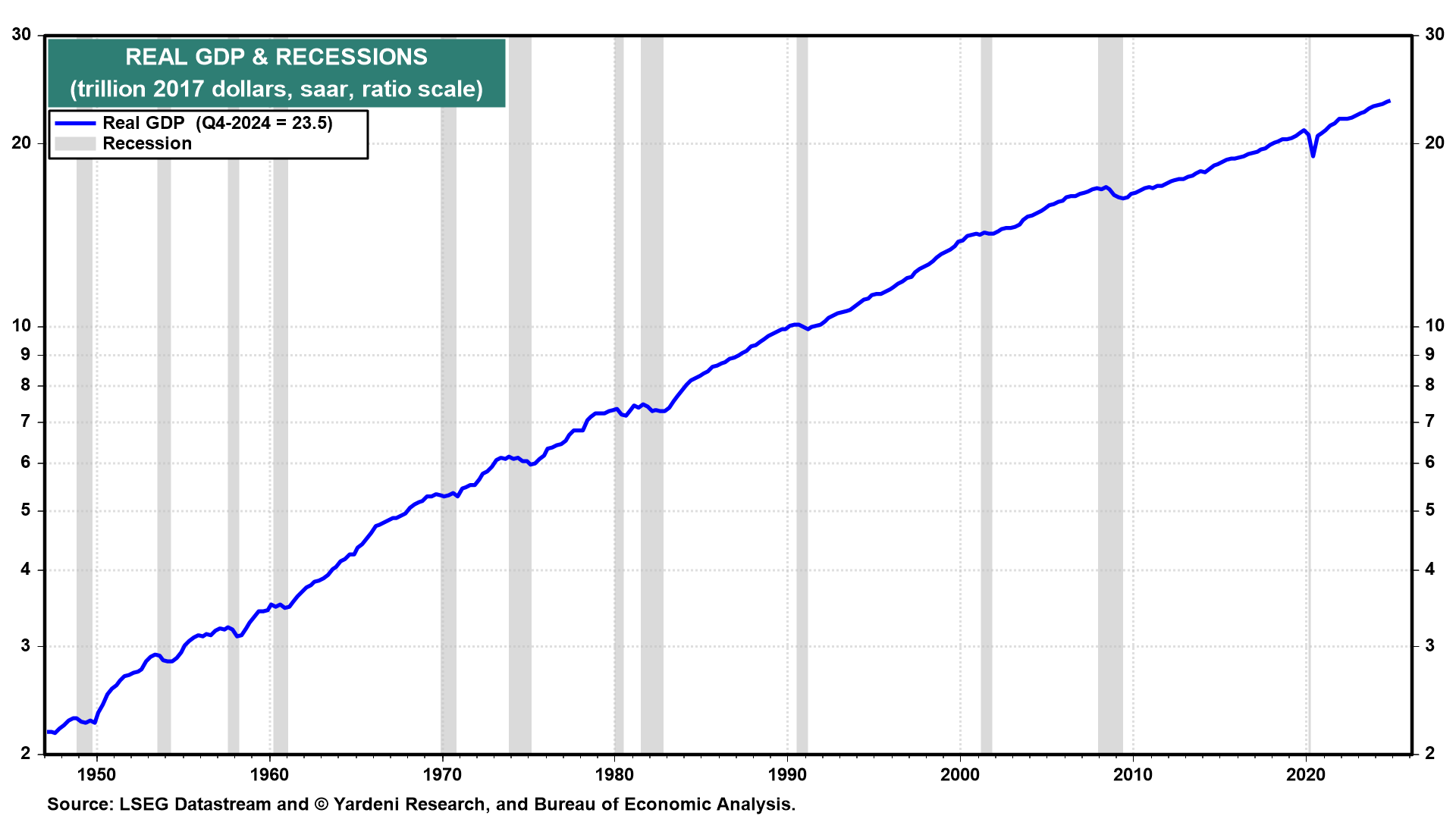
The full recovery from the recession in early 2020 took only 20 months, one of the shortest recovery periods on record. The post-recovery expansion has lasted 38 months so far through the end of 2024. We think it could last at least as long as the 1990s expansion (i.e.,105 months) in our Roaring 2020s scenario. It could be even longer if the 2030s also roar.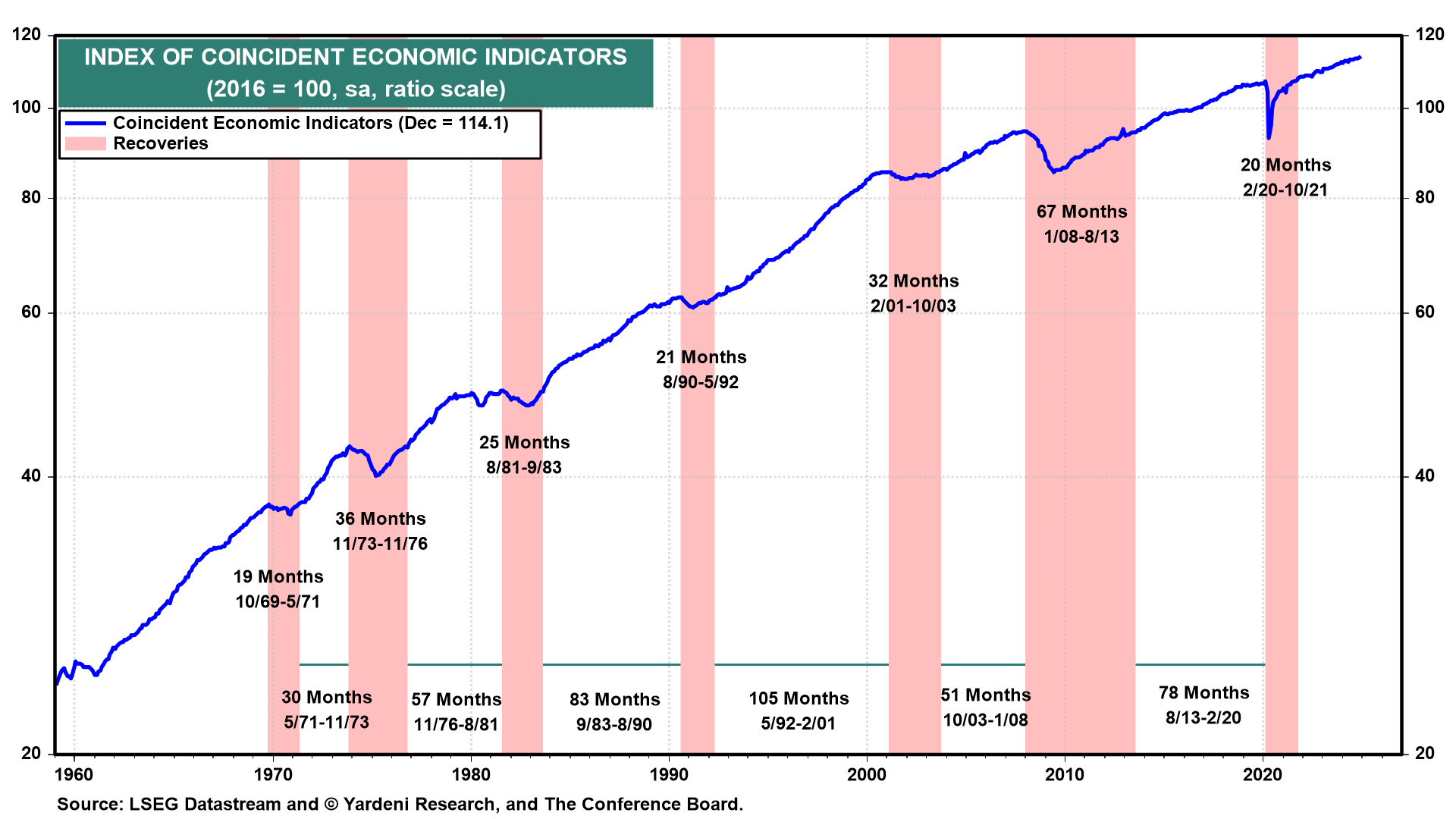
(2) Washington matters less. We should also be impressed by how well the US economy has performed for many years despite the meddling of Washington. We attribute this to the work ethic of American workers and the business acumen of American company management. Together, they’ve driven real GDP to new record highs for decades despite quixotic government regulations and fiscal policies.
Americans also do entrepreneurial capitalism extremely well, creating new technologies and businesses. Since the pandemic, the 12-month sum of new business applications has consistently exceeded 5.0 million, according to the US Census Bureau. That’s certainly an important driver of both employment and capital spending in the US economy.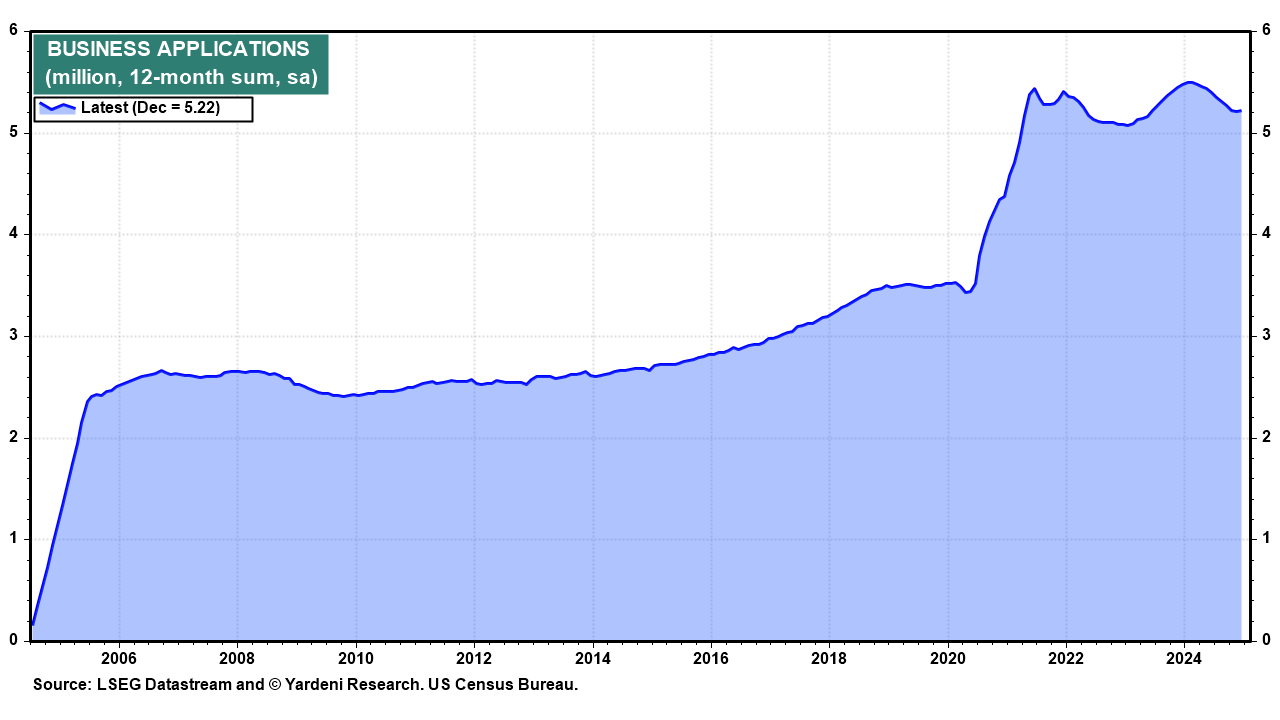
The number of sole proprietorships was approximately 29 million in 2021.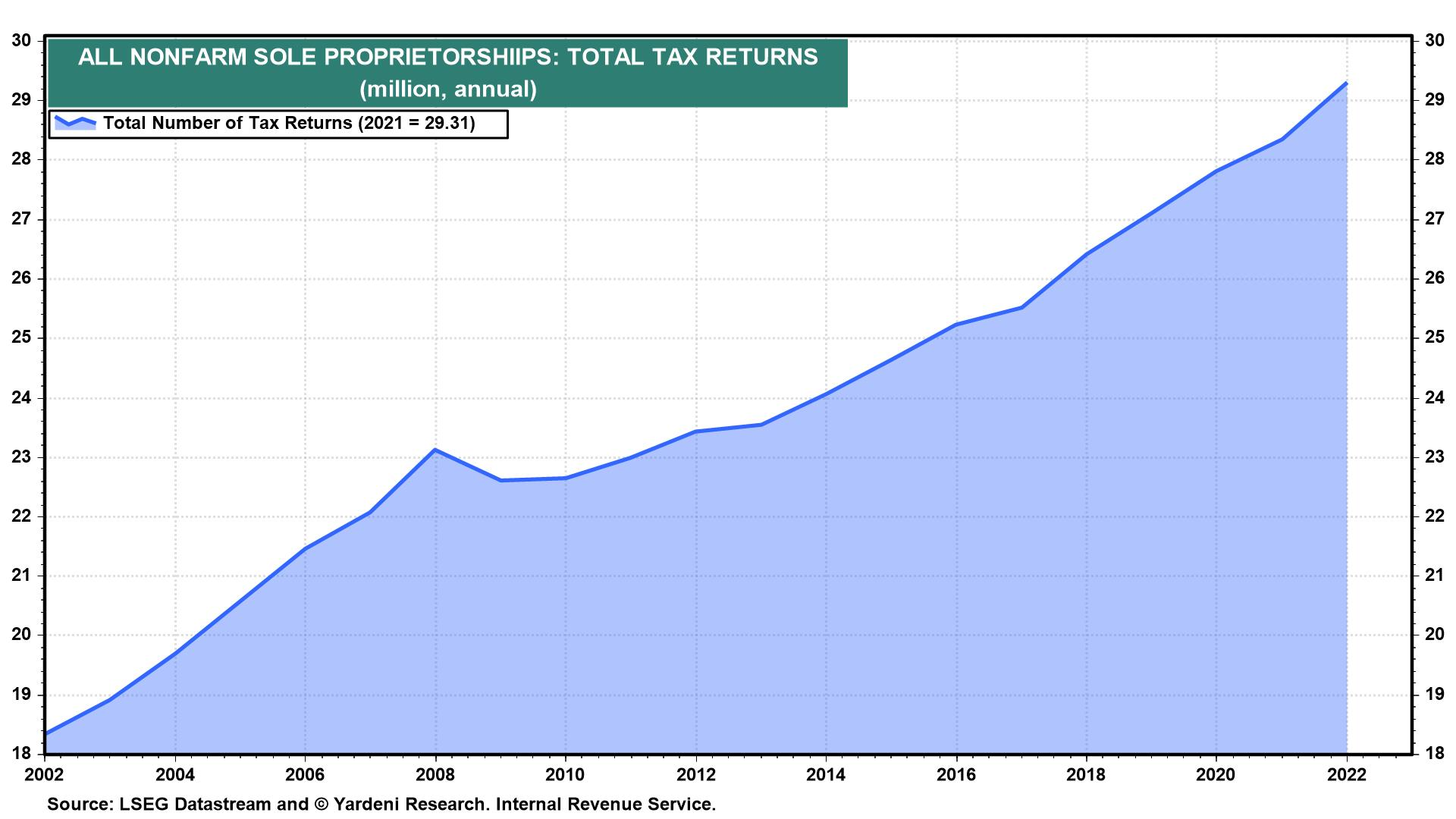
Within the category “personal income,” proprietors’ income in December totaled a record $2.0 trillion (saar), while rental income totaled a record $1.1 trillion, for a record $3.1 trillion combined.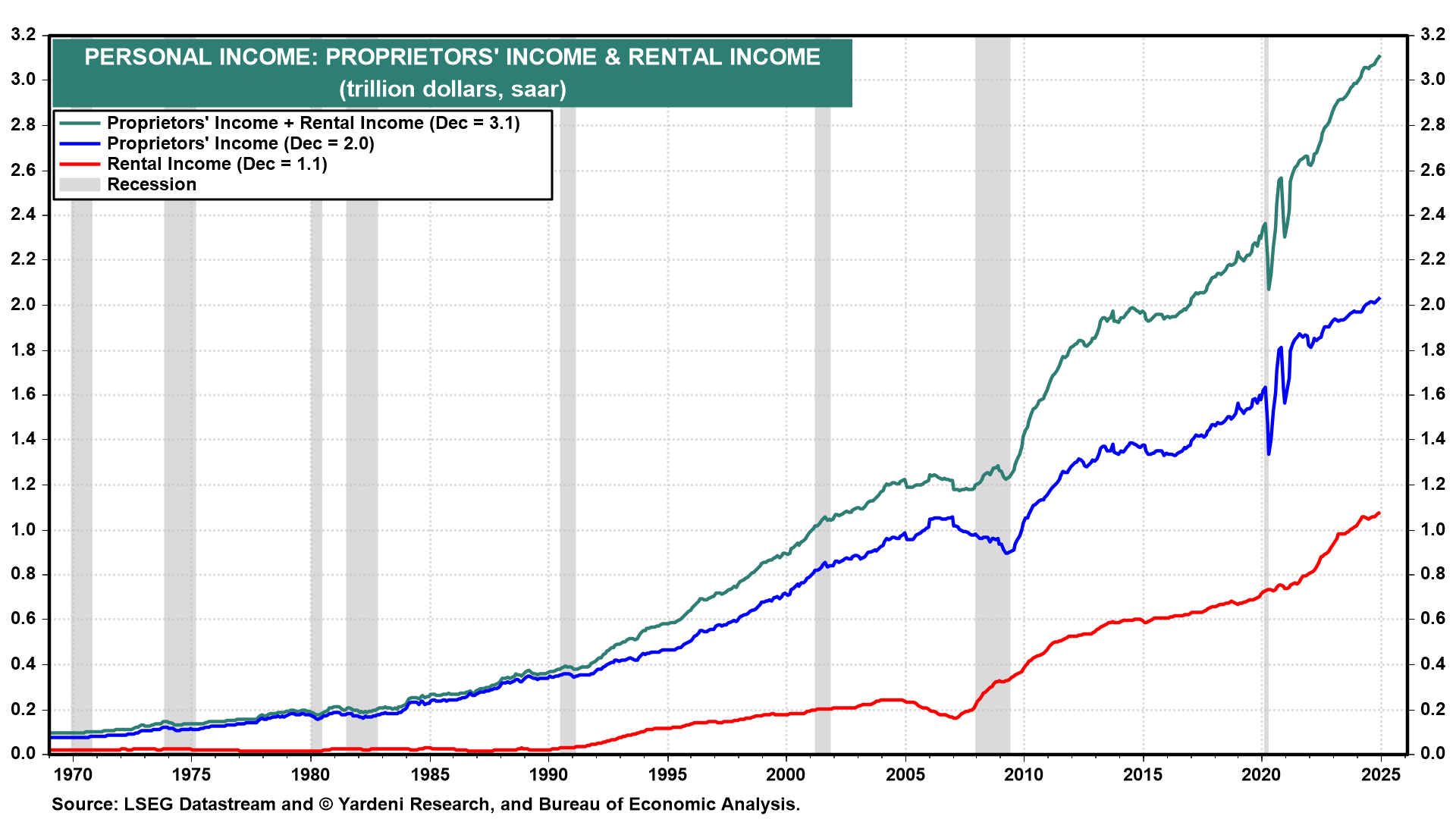
Nonlabor income, which includes these two sources plus interest and dividend incomes, accounts for 28.1% of personal income, up from 24.6% at the start of the 1970s. Americans’ high nonlabor income helps to explain why consumer spending has become increasingly resilient.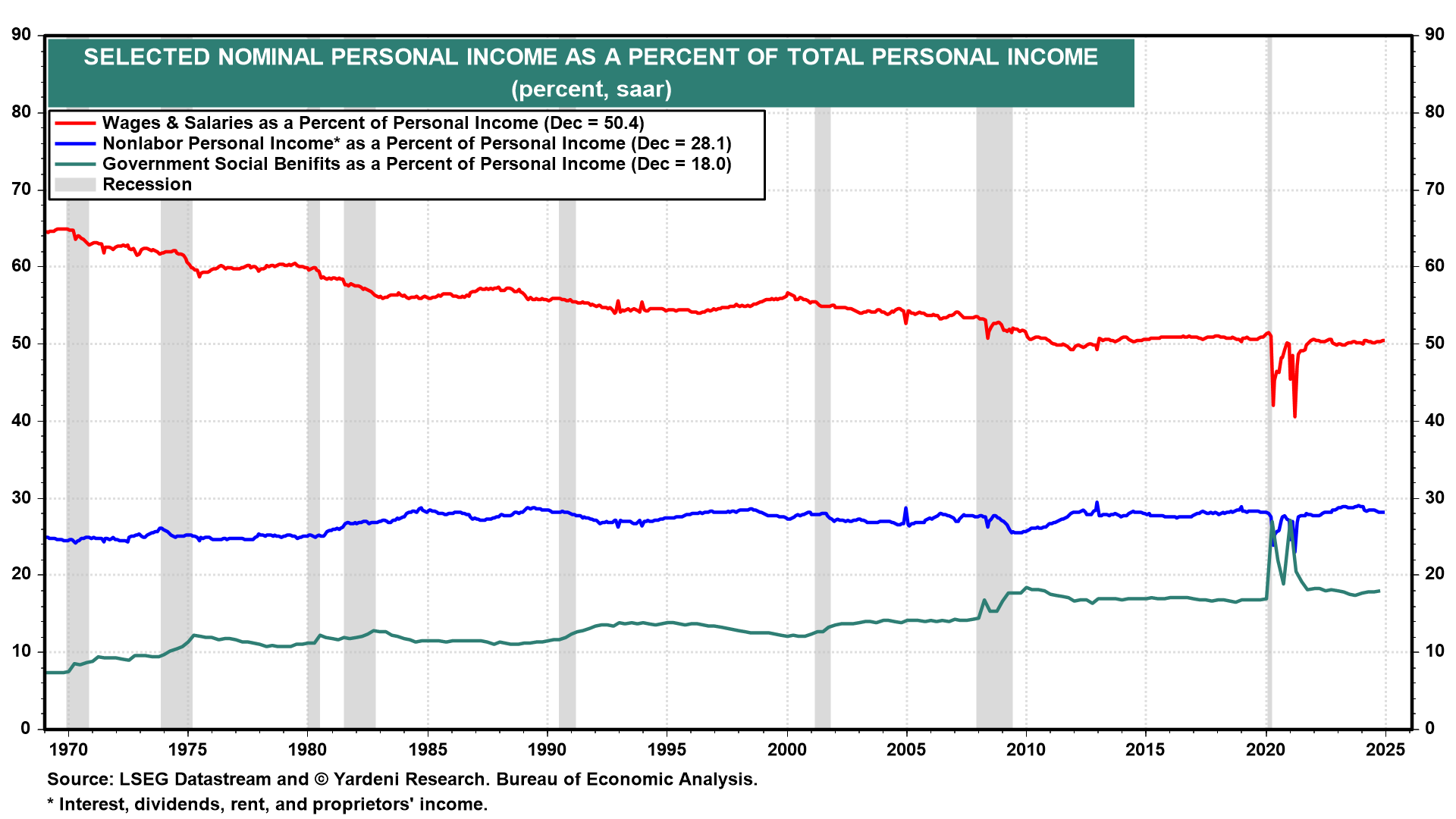
(3) Capital markets. America’s capital markets survived the Great Financial Crisis and have become increasingly sophisticated and diversified ever since. Venture capital is readily available for startups. The capital markets also have more shock absorbers since the Great Financial Crisis. Private debt markets allow for the restructuring of bad debts without causing financial crises. Distressed asset funds do the same.
Since the Great Financial Crisis and the Great Virus Crisis, the Fed has become more adept at rapidly establishing emergency liquidity facilities to stop financial crises from spreading and becoming economy-wide credit crunches, which then cause recessions. That’s exactly what happened during March 2023, when a banking crisis in California was quickly contained.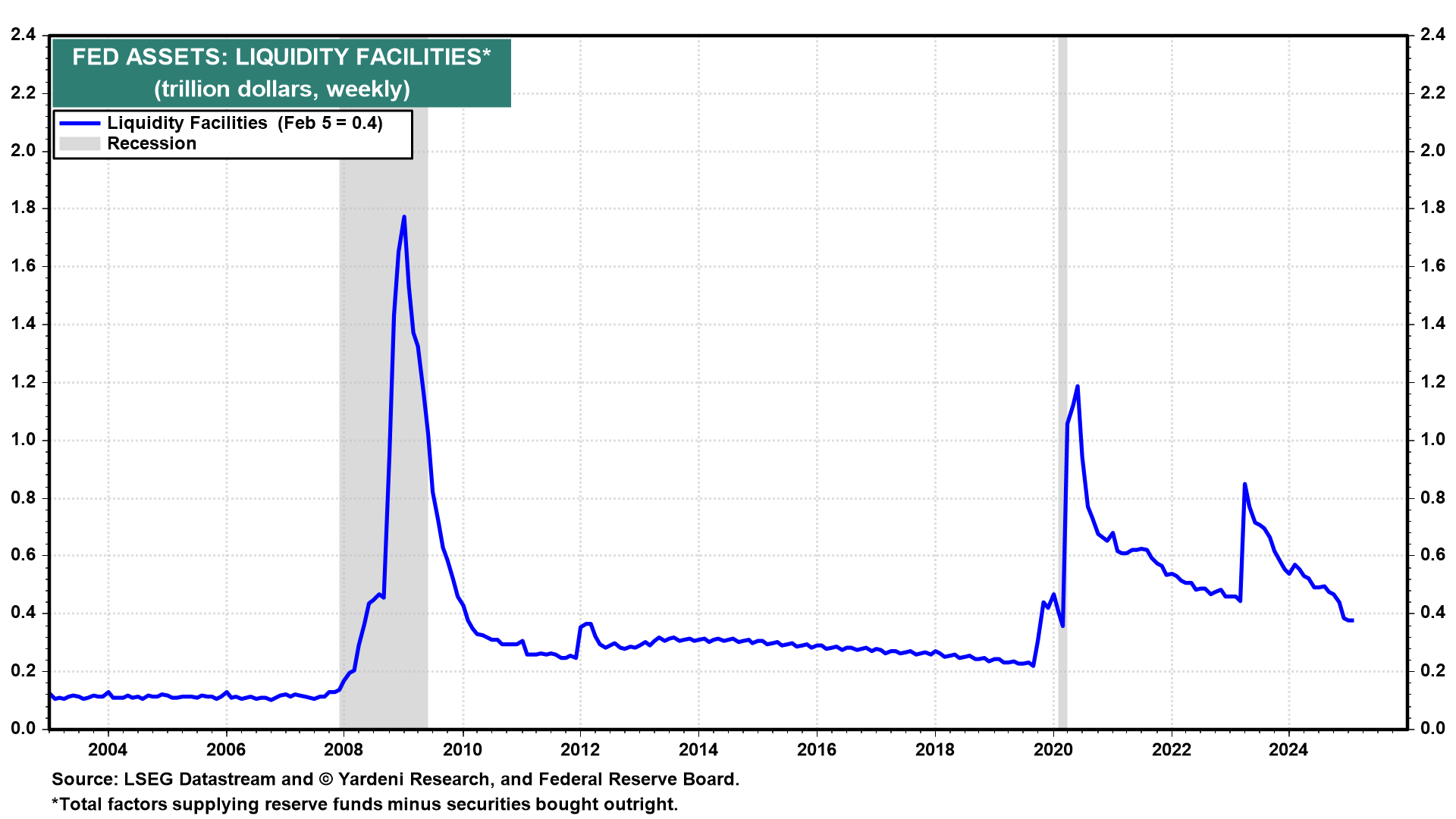
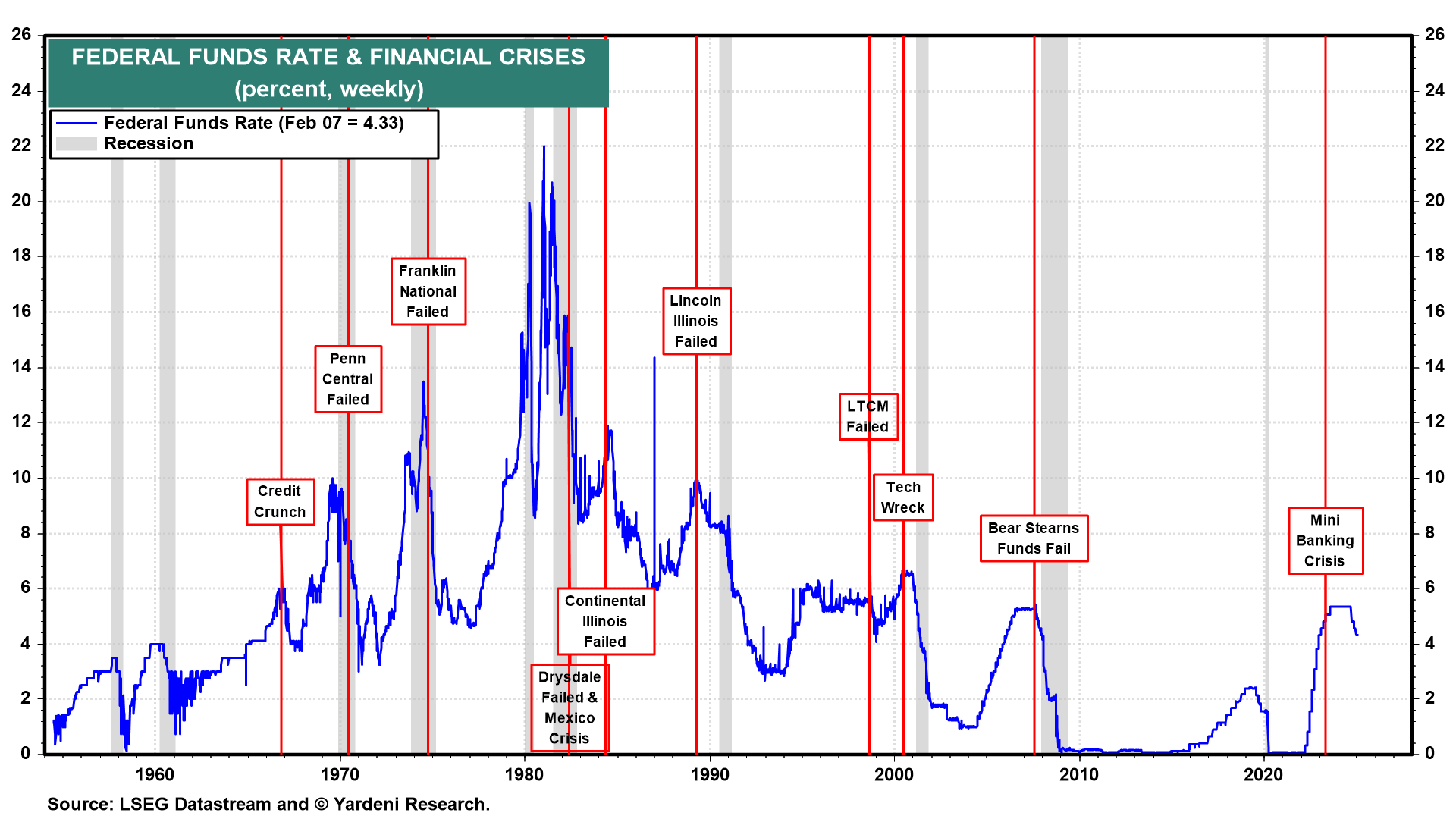
(4) Technology and productivity. The US economy has been experiencing a Digital Revolution since the 1950s, when IBM (NYSE:IBM) mainframe computers proliferated in business, government, and academia. The Digital Revolution is all about data processing, i.e., processing more and more data faster and faster at lower and lower cost. From this perspective, AI is an evolutionary development in the Digital Revolution. AI allows more data to be processed faster than ever before and at a lower cost, as DeepSeek has demonstrated. So much data can be processed that we need large language models (a.k.a. LLMs) to make some sense of it all and use it to increase productivity.
When the use of personal computers proliferated during the 1990s, the only “apps” widely run on them were Excel and Word. Now tens of thousands of apps are available with more being produced every day, some written by AI coding software! Most are for entertainment, but many are also boosting productivity.
High-tech now accounts for 50% of nominal business capital spending, up from close to 20% in the mid-1960s.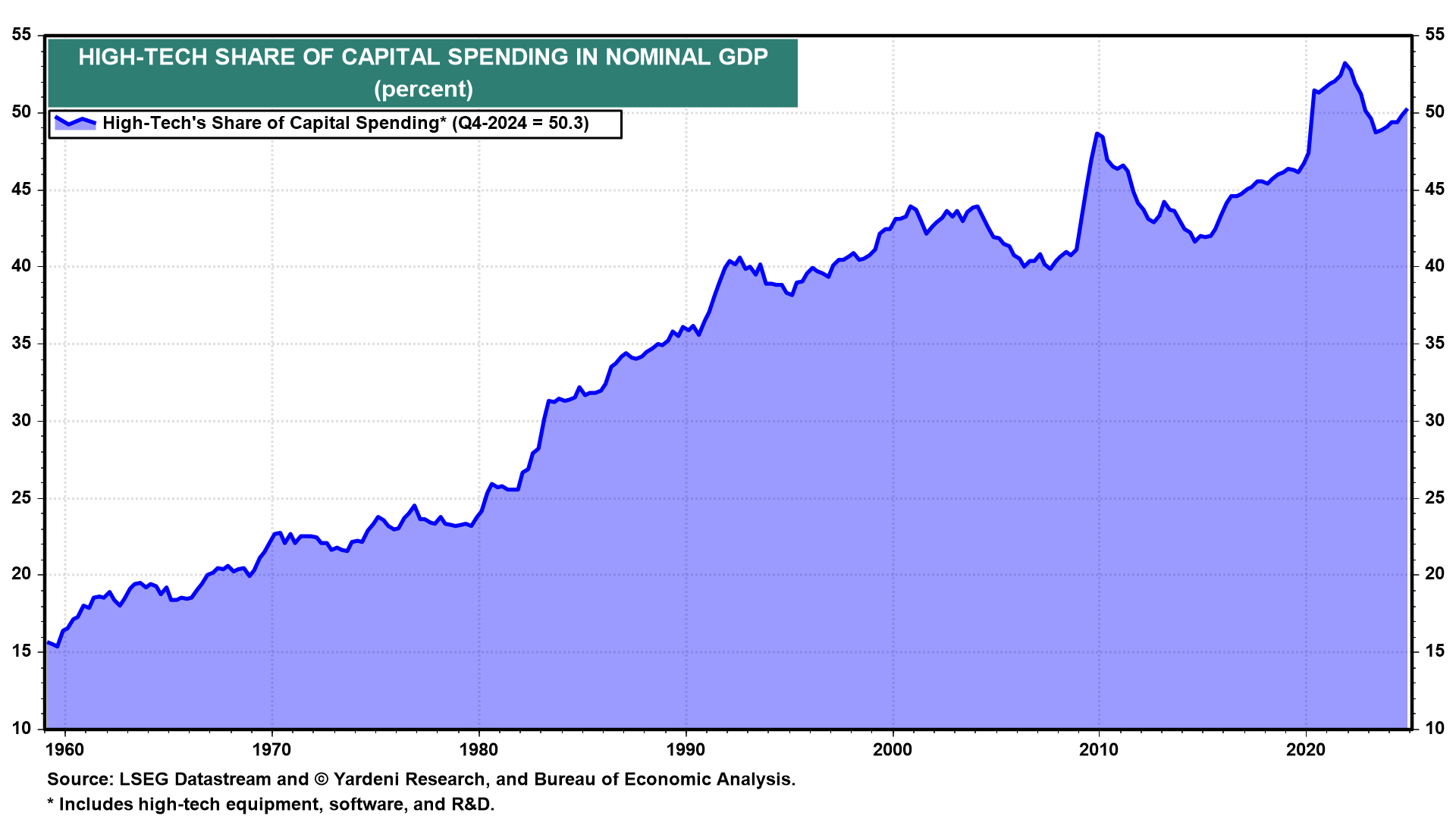
This obviously doesn’t include lots of consumer spending on technology hardware and software.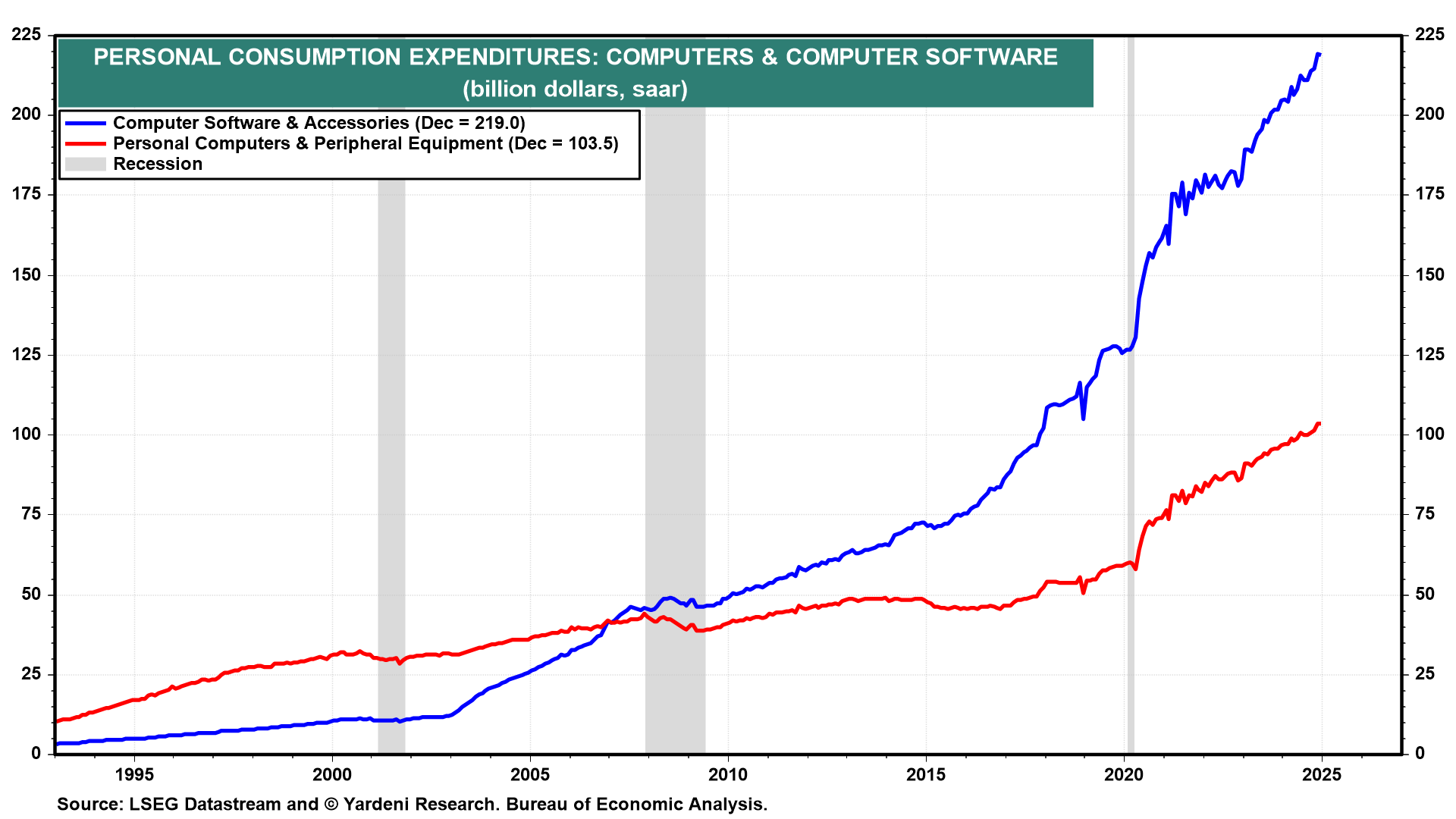
(5) Resilient consumers. As noted above, consumers collectively have diverse sources of income that help to explain why the tightening of monetary policy didn’t depress their spending. On balance, higher interest rates benefit more consumers than they hurt. During December 2024, personal interest income totaled a record $2.0 trillion, while personal nonmortgage interest payments totaled $0.6 trillion.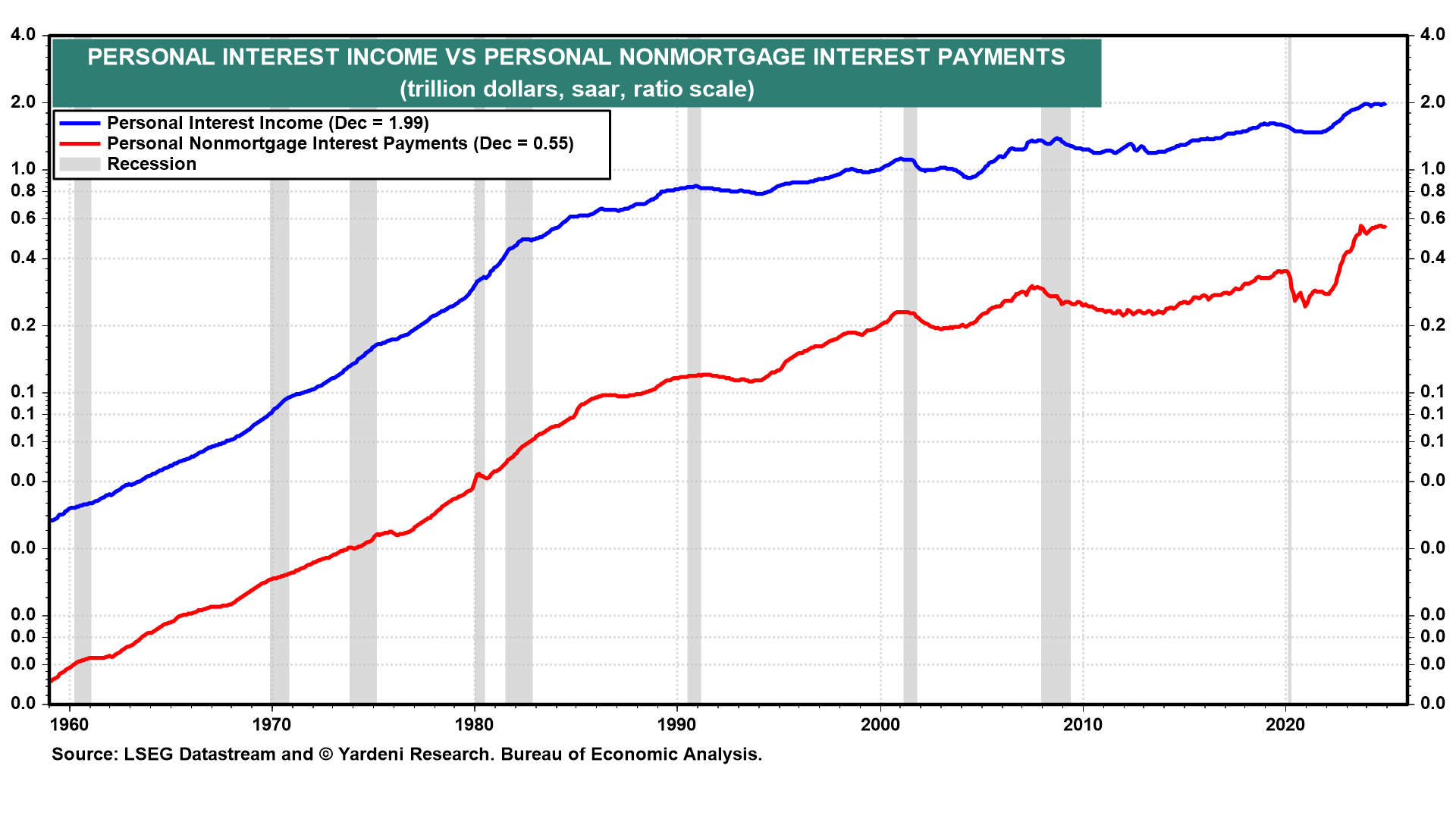
Furthermore, as we have noted often in the past, the household sector has a record $159.9 trillion in net worth, with about half of that held by Baby Boomers, a group that’s continually retiring. These seniors will probably turn the overall personal saving rate negative as they spend down their retirement assets in coming years. While they are doing so, the values of their homes and stock holdings continue to rise!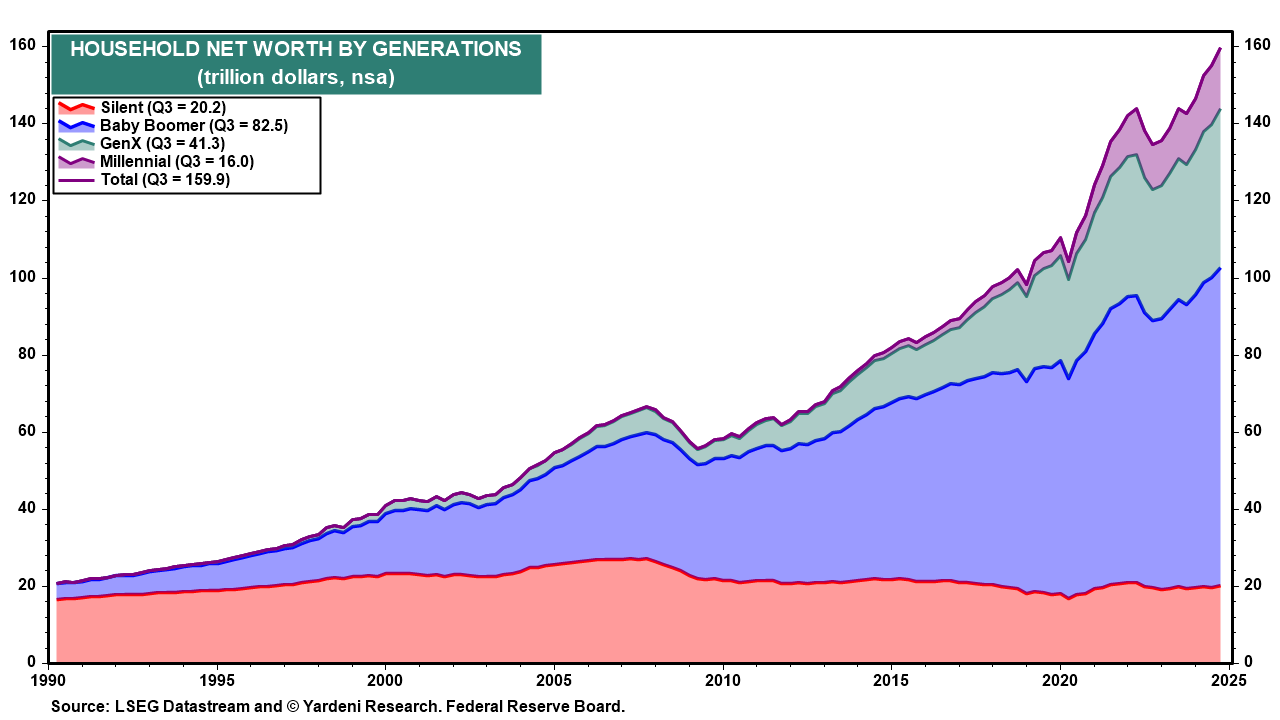
(6) Accentuating the positives. The theme song of the Roaring 2020s might be a 1944 tune titled “Ac-Cent-Tchu-Ate the Positive.” It was nominated for the Academy Award for Best Original Song at the 18th Academy Awards in 1945 after being used in the film “Here Come the Waves” with Bing Crosby and Betty Hutton.
During my “Roaring 2020s Tour,” I encourage our accounts to accentuate the positives and to consider the possibility that the US economy will continue to grow and the stock market will continue to rise to record highs. It’s happened more often than not in the past.
US Economy II: The 1920s Ended Badly. Invariably, the pushback that Eric and I get on our Roaring 2020s scenario is that the Roaring 1920s ended badly. It was followed by the Great Crash in the stock market and the Great Depression in the economy. These calamities had multiple causes. We believe that the most important cause was the Smoot-Hawley Tariff, which was enacted during June 1930.
Roughly half of the stock market drop in late 1929 was reversed during the first few months of 1930, with the S&P 500’s predecessor index (the Standard Statistics Company’s index of 233 US companies) back to where it had been the year before. That was not the Great Crash. Rather, the Great Crash started in May 1930, a few weeks before the Smoot-Hawley Tariff was enacted.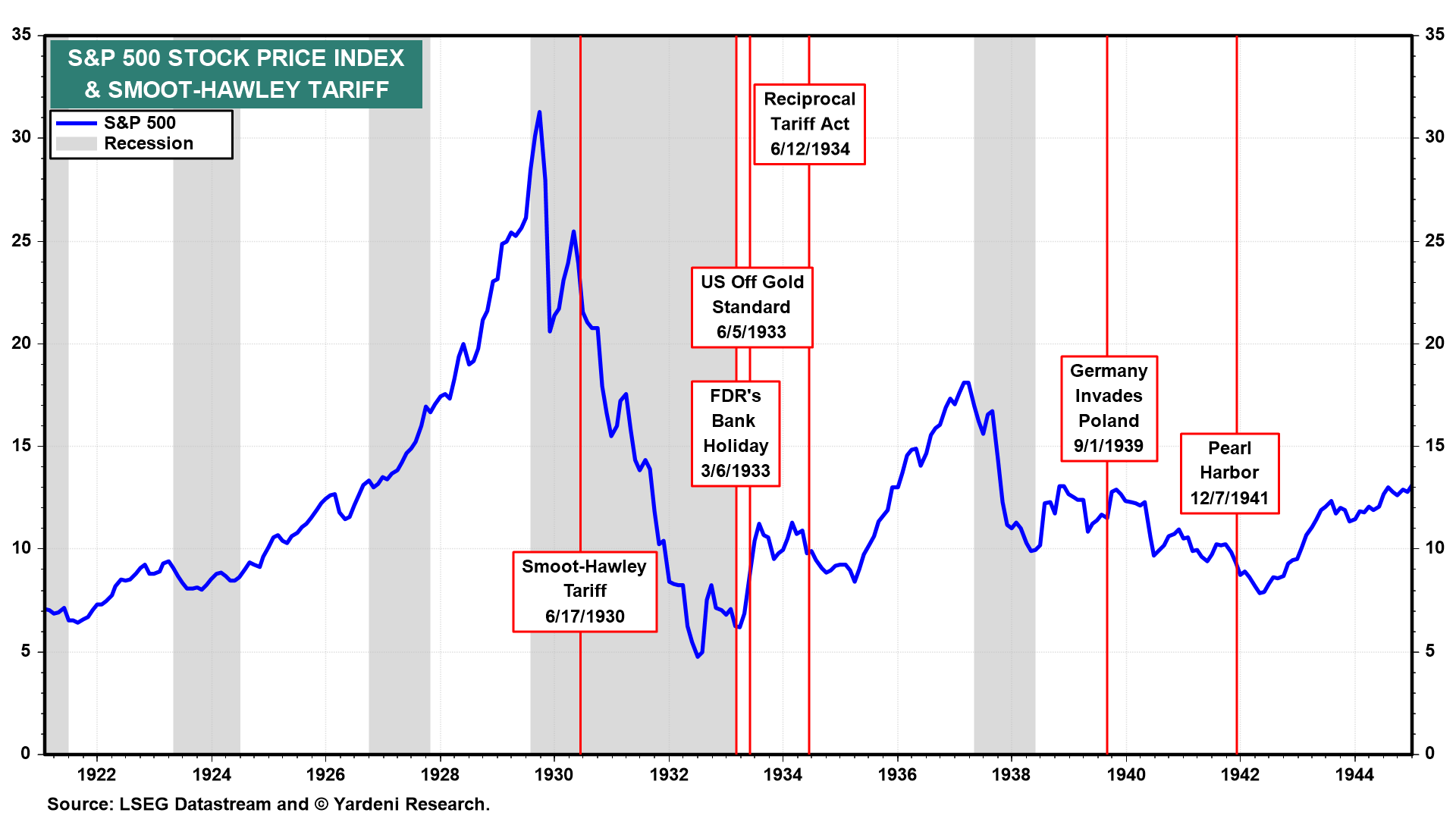
Industrial production also crashed after the tariff was enacted.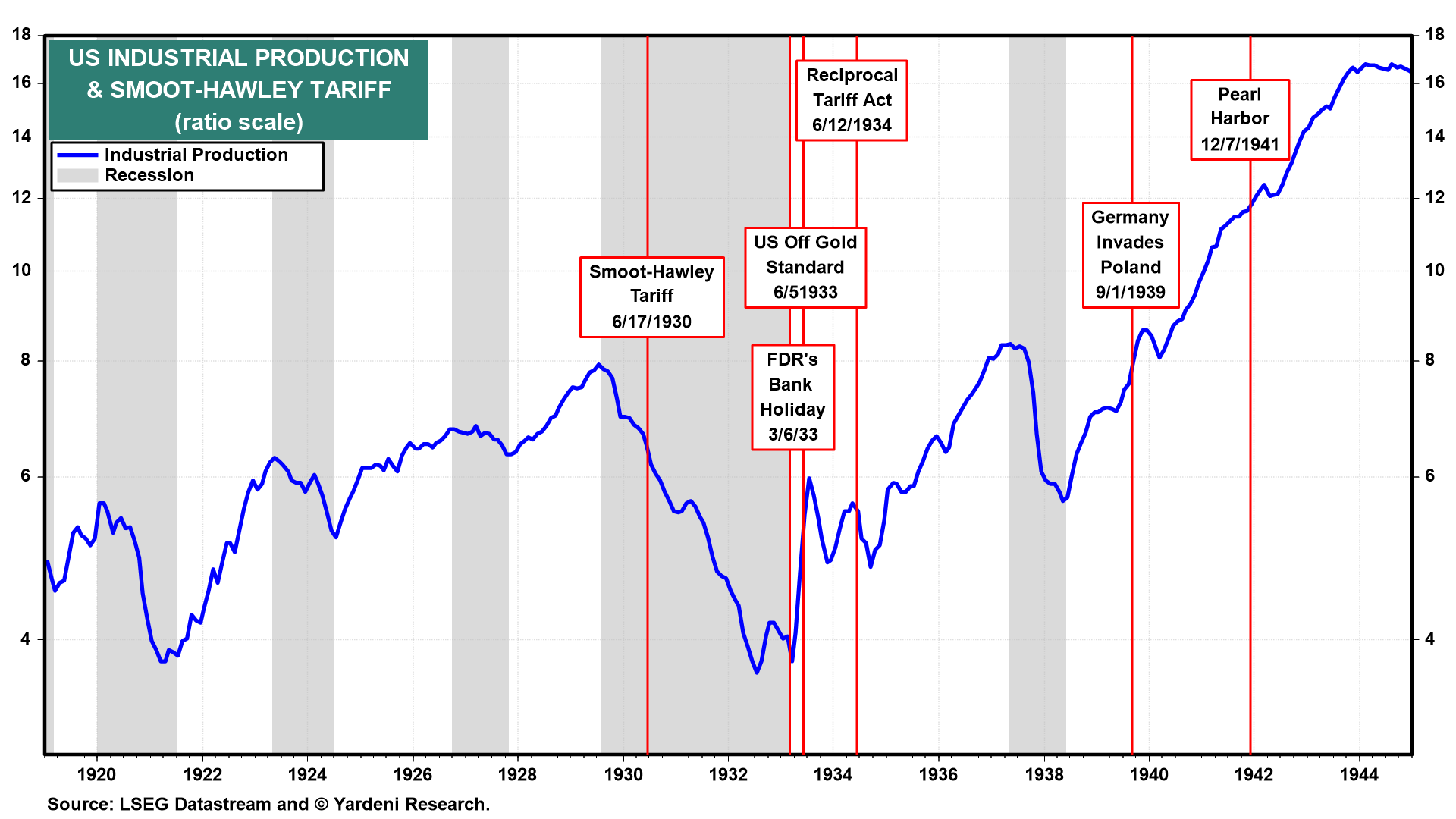
The tariff act prompted retaliatory tariffs by many other countries. The resulting trade war caused commodity prices to collapse along with global trade. Farmers were especially hard hit and were forced into bankruptcy, which exacerbated the banking crisis.
On June 12, 1934, Congress enacted the Reciprocal Tariff Act. It authorized the president to negotiate trade agreements with separate nations to reduce tariffs in return for reciprocal reductions in tariffs. Between 1934 and 1945, the United States signed 32 reciprocal trade agreements with 27 countries.
US Economy III: Retaliatory vs Reciprocal Tariffs. On Friday, President Donald Trump indicated that reciprocal tariffs might replace the proposed 10%-20% universal import duty that was a key part of his economic agenda during the campaign. He is leaning toward implementing “mostly” reciprocal tariffs rather than broad import duties applied across the board. Trump announced on Sunday that he is slapping a universal 25% tariff on all imports of steel and aluminium. It will apply to Mexico and Canada as well, even though on February 3 he gave both countries a 30-day extension of an across-the-board 25% tariff on imports from them (except for a 10% tariff on Canadian oil).
Is this the start of Smoot-Hawley 2.0? We doubt it. Much will depend on whether Trump views his tariffs as retaliatory or reciprocal. The latter implies that the US is matching tariffs imposed on US goods and that there is a willingness to negotiate to lower or no tariffs. We think that’s Trump’s goal.
